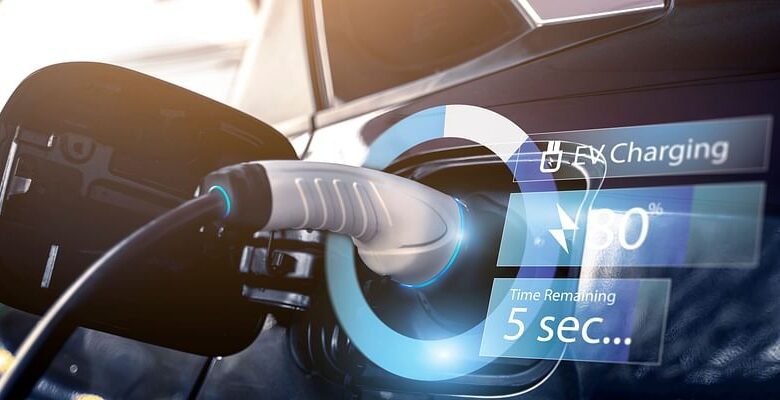India largest market for electric three-wheelers: IEA

India continues to be the world’s largest market for electric three-wheelers for a second year in a row as sales rose nearly 20% to reach about 7 lakh vehicles in 2024, the International Energy Agency (IEA) said in a report.
In its Global EV Outlook 2025, the Paris-based energy watchdog said India continues to drive most growth in the global electric three-wheeler market.
Despite the global three-wheeler (3W) market shrinking 5% from the previous year, electric 3W sales grew more than 10% to surpass 1 million vehicles in 2024. Electric 3W sales represented almost one-quarter of all 3W sales, up from one-fifth in 2023, it said.
The market is highly concentrated, with China and India together accounting for more than 90% of electric and conventional 3W sales.
“Electrification of 3Ws in China has stagnated at less than 15% over the past three years. In 2023, India overtook China to become the world’s largest market for electric 3Ws, and it maintained this position in 2024, with sales growing close to 20% year-on-year to reach nearly 7,00,000 vehicles,” it said.
This translated into a record 57% electric sales share in 2024, 3% up on the previous year.
This growing trend, it said, looks set to continue thanks to policy support under the new PM E-DRIVE scheme, which allocated budget in 2024 to support the roll-out of more than 3,00,000 electric 3Ws for commercial use—for which the total fleet (electric and ICE) was estimated at more than 10 million vehicles in 2023.
IEA said China, India and Southeast Asia remain the world’s largest 2/3W markets, accounting for around 80% of 2024 global sales, with 2/3Ws serving as the primary mode of private passenger transport in these regions.
“India’s increasingly dynamic electric 2W market hosted a total of 220 OEMs in 2024, up from 180 in 2023, although the four market leaders accounted for a combined 80% of the 1.3 million electric 2Ws sold in the country in 2024 (6% of the overall 2W market),” the report said.
While the upfront purchase price of electric 2Ws remains higher on average than that of conventional 2Ws, increasing competition is prompting OEMs to offer more affordable electric models.
For example, the Indian market leader, Ola, released its S1X entry model, equipped with a 2 kWh battery and 6 kW peak power, at a sticker price of Rs 70,000 – lower than the average price of the five best-selling ICE 2W models.
“Policy support is also helping to bridge the affordability gap between electric and ICE 2W models, with the new PM Electric Drive Revolution in Innovative Vehicle Enhancement (PM E-DRIVE) policy continuing financial support formerly provided under both Faster Adoption and Manufacturing of Electric Vehicles (FAME)-II and Electric Mobility Promotion Scheme measures,” IEA said.
This provides purchase incentives for electric 2Ws (offering purchase subsidies of up to Rs 5,000/kWh for 2Ws fitted with lithium-ion batteries), as well as for 3Ws and other emerging EV categories (specifically excluding private cars), with a total budget of $1.3 billion.
The scheme is planned to operate until March 2026 to support the roll-out of about 2.5 million electric 2Ws, up from 1 million targeted under the previous FAME-II policy.
On the manufacturing side, the 80 largest electric 2W makers in India accounted for a combined production capacity of 10 million electric 2Ws in 2024, almost 8 times the domestic sales that year. The capacity is expected to increase to 17 million electric 2Ws in the near term, if all OEM announcements come to fruition.
On electric cars, IEA said total sales in India increased only slightly, approaching 1,00,000 (or 2%) in 2024.
Sales in India grew 45% year-on-year, nearing 35,000 electric car sales for the first quarter of 2025.
“In India, high import duties on EVs and the availability of locally made, affordable electric models meant the share of Chinese imports in the country’s EV sales remained below 15% in 2024.
“While the cheapest battery electric car model was produced locally by a Chinese OEM (SAIC’s city car, the MG Comet EV, priced under $8,000), the average price of imported Chinese BEVs was twice that of those made by domestic manufacturers,” it said.
In 2024, all battery electric vehicle (BEV) models manufactured by Indian carmakers started below $20,000, while none of the imported Chinese BEV models were priced under that threshold.
Overall, the average price gap between battery electric and ICE cars fell below 15% for small cars and 25% for SUVs in 2024.
IEA said India has seen rapid growth in electric bus deployment since 2020, with stock increasing from less than 3,000 to more than 11,500 at the end of 2024.






